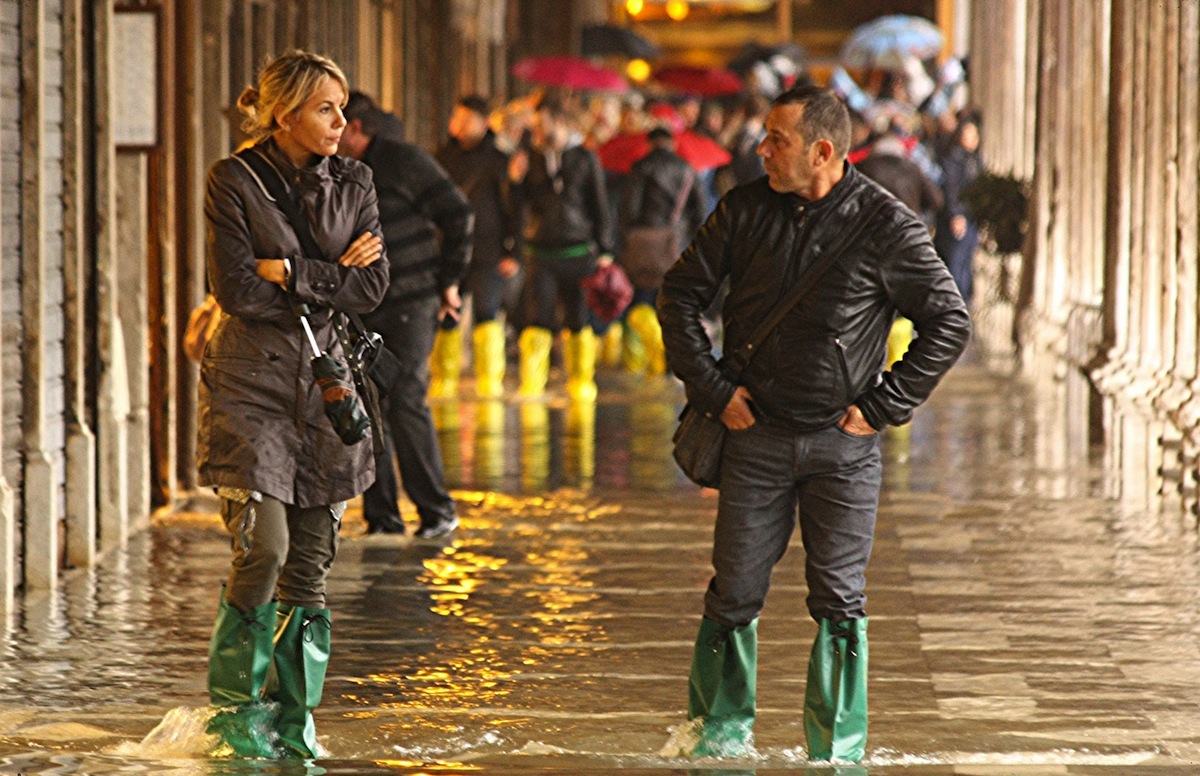
Paolo PescioFlooding in Venice last week.
A multibillion-dollar effort to protect Venice from flooding has passed its first public test.
The Moses project involves flood barriers that will stretch a mile across the mouth of Venice’s lagoon, rising from the water when high tides threaten to deliver acqua alta — periodic floods that inundate the Italian city. The effort is designed to prevent flooding that has become more common and severe during the last two centuries as sea levels rise and as the soggy city sinks.
Construction has been underway for a decade and is expected to continue until 2016, when 78 barriers will be in place. Last week, Venice tested out the first four floodgates, each weighing more than 300 tons. The barriers rose from the lagoon as intended, drawing applause from VIP spectators. From The Telegraph:
The gates are being built at the three inlets which link the lagoon to the Adriatic sea: Lido, Malamocco and Chioggia.
“The benefit of the city is that no more floods will arrive and that all the ground floors of the city, which are usually washed out and destroyed by these tides, will be safe,” [said] Hermes Redi, Chief Executive of Consorzio Venezia Nuova which are in charge of the project.
He explained that in normal weather conditions the movable barriers will lay full of water on the bottom of the channel.
In case of high tides, the barriers will be emptied through to the input of compressed air so that they can emerge and separate the lagoon from the sea.
The successful test came just days after the city’s first acqua alta of 2013. In theory, if the the barriers had been operational, the city would have stayed high and dry even as the rising Adriatic Sea pressed in against the devices. Watch:



